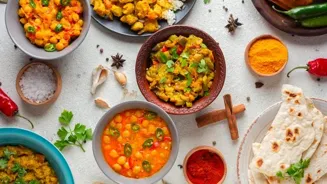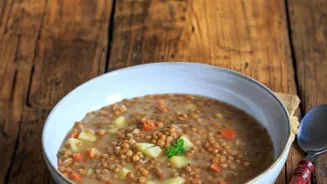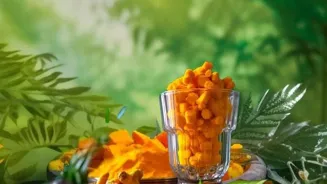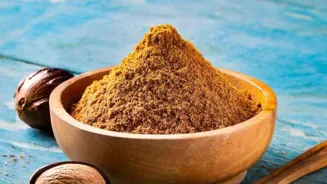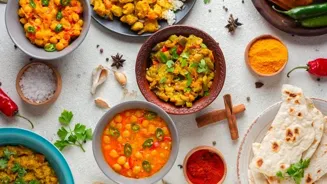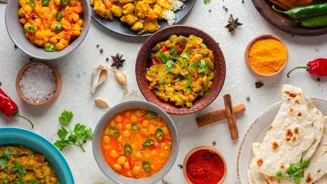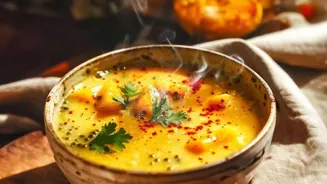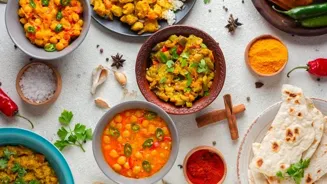Unveiling the rich world of Indian lentils! Learn about 7 must-know varieties. Dive into the flavorsome journey
Namaste, food lovers! India, a land of vibrant colours, diverse cultures, and of course, incredibly
delicious food, has a secret weapon in its culinary arsenal: lentils! Forget those boring, mushy experiences you might have had. Indian lentils, or dals as we lovingly call them, are superstars.
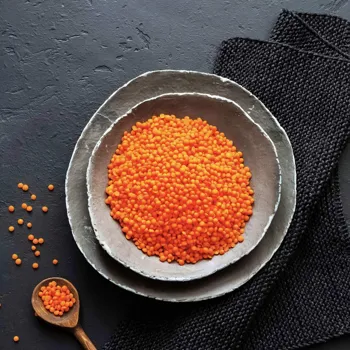
They are packed with protein, fiber, and essential nutrients. They are also incredibly versatile, forming the heart of countless comforting dishes. Dals are everyday foods in India, almost every household will cook dal for lunch and dinner.
Whether you're a seasoned cook wanting to expand your repertoire or a newbie looking to explore the world of Indian cuisine, this guide is for you. We are going to tell you about seven essential lentil varieties. So, grab your spoons, and let's delve into the fascinating world of Indian dals.
Toor Dal: versatile yellow lentil in classic Indian dishes
Let's start with the ever-popular Toor Dal, also known as Arhar Dal. This yellow lentil is a staple in many Indian homes and is what most people visualise as "dal" when you say the word. Toor Dal has a mild, slightly nutty flavour, making it incredibly versatile.
It's the main ingredient in the classic dal tadka, a comforting dish tempered with spices like cumin, mustard seeds, and chillies. Toor dal is also used in sambar, a South Indian lentil and vegetable stew. It pairs perfectly with rice or roti (Indian flatbread).
Cooking Toor Dal requires a bit of patience, as it takes longer than other lentils to cook. But the result is a creamy, satisfying dish that's worth the wait. Always look for toor dal which has a rich yellow colour to get the authentic flavour.
Masoor Dal: quick-cooking, versatile, flavorful lentil for easy meals
Next on our list is the striking Masoor Dal, easily recognisable by its orange-red colour when split. Masoor Dal cooks incredibly quickly, making it a favourite for busy weeknights. It has a lovely, earthy flavour, which makes it perfect for simple and flavourful dishes.
Masoor Dal is often used in North Indian dishes like dal makhani (though that dish traditionally uses black lentils as well). It can also be cooked with spinach and cumin for a nutritious and tasty meal or made into a simple, warming soup. Masoor dal can also be used to make great stuffed parathas.
Its quick cooking time and delicious taste make it a great addition to any kitchen because it gives perfect results in a short time. So you can make it instantly and enjoy it..
Moong Dal: versatile, easy to digest, husk impacts texture, used in sweet and savory dishes
Now we move on to the tiny but mighty Moong Dal. Available both with and without the husk (yellow and green respectively), Moong Dal is known for its easy digestibility. This makes it a popular choice for children and those with delicate digestive systems.
Moong Dal has a slightly sweet and nutty flavour, making it versatile for both sweet and savoury dishes. Yellow Moong Dal, with the husk removed, cooks down into a smooth, creamy texture. It is used to make khichdi, a comforting one-pot meal of rice and lentils often prescribed during illness.
Green Moong Dal, with the husk intact, takes a little longer to cook and retains more of its texture. It can be sprouted and used in salads or stir-fries, offering a boost of nutrients.
Urad Dal: Versatile legume enhancing South Indian cuisine
Urad Dal, also known as Black Gram, holds a special place in South Indian cuisine. This creamy, almost buttery lentil, whole or split (white lentils) is a key ingredient in many iconic dishes.
Whole Urad Dal is traditionally used to make dal makhani, the slow-cooked, creamy lentil dish simmered overnight with butter and cream (though variations also use kidney beans).
Split Urad Dal, or Dhuli Urad Dal, is used to make idli and dosa batter, the fermented crepe and steamed cake that are staples of South Indian breakfasts. Urad dal helps in making food light. It increases the nutritional value of any food and helps to stay fit and active.
It needs some time to be prepared but can surely take your food to another level.
Chana Dal, a versatile lentil with nutty flavor, stars in many dishes
Chana Dal, also known as Bengal Gram, is a delightful lentil with a slightly nutty and earthy flavour. Unlike some of the other lentils that cook down into a mush, Chana Dal holds its shape beautifully.
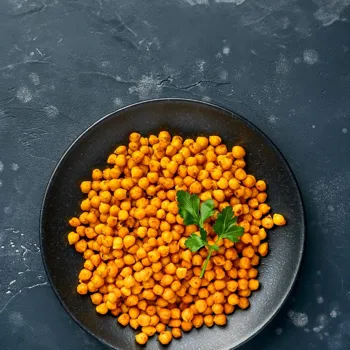
It's the star of various dishes, including dal dhokli, a Gujarati speciality where spiced lentil soup is served with wheat dumplings. Chana Dal is also used to make puran poli, a sweet flatbread stuffed with a sweet lentil paste.
Many households use chana dal for its high protein content, Its versatility makes it suitable for a wide range of culinary ventures. It can be cooked, enjoyed as a snack, or even ground into flour for making various dishes.
Lobia, a bean like lentil, adds unique flavor to Indian cuisine
Lastly, we have the Lobia, also known as Black-Eyed Peas. Although technically a bean and not a lentil, Lobia is often cooked and used in Indian cuisine in much the same way as lentils. It has a distinctive earthy flavour and a slightly beany texture.
Lobia is commonly used in North Indian dishes, prepared with onions, tomatoes, and a blend of spices. It is often served with rice or roti. Lobia requires soaking for several hours before cooking to soften the beans and reduce cooking time.
Its distinct taste and texture make it a delightful addition to the world of Indian vegetarian cuisine. Lobia sabji is a comforting dish many people love to eat with roti.
AI Generated Content. Glance/InMobi shall have no liability for the content
